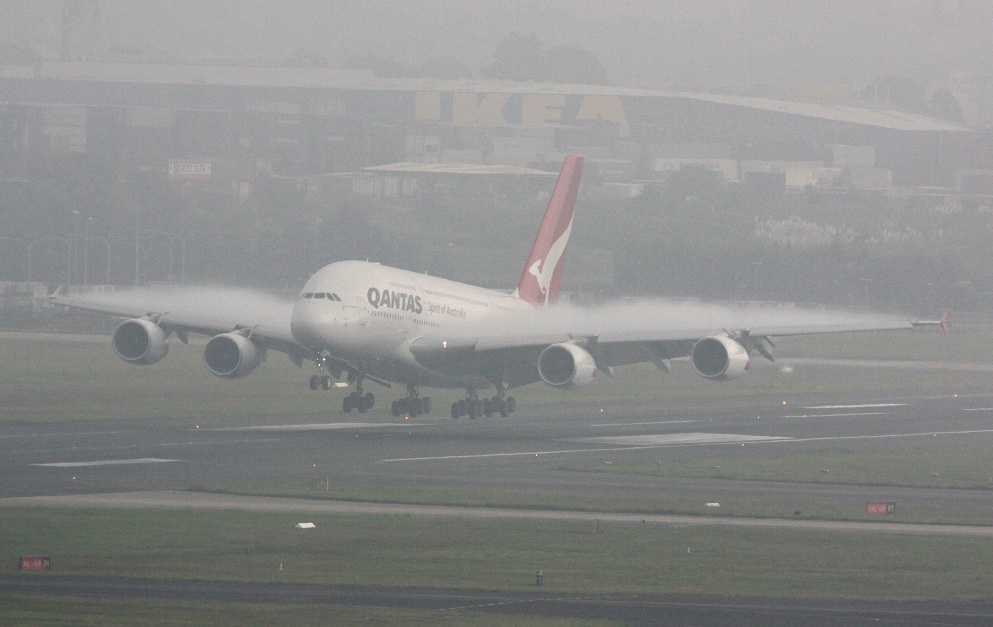Balance
Senior Member.
This video has been shared on social media and retitled as "pilot forgetting to turn off the chemtrails".
Original video description from MrJI12
Wikipedia Explains:
https://en.wikipedia.org/wiki/Contrail#Condensation_from_decreases_in_pressure
More examples:
Steve Morris has a great collection of photos of similar events, with dramatic lighting:
https://www.flickr.com/photos/16699423@N02/sets/72157627508873002/


https://www.alpa.org/portals/alpa/magazine/2007/May2007_WakeTurbulenceThreat.pdf

http://www.airliners.net/photo/Qantas/Boeing-737-476/0887624/L/

http://www.owenzupp.com/_blog/Owen_...Down!_An_Aviation_Image_by_Andrew_McLaughlin/

http://www.airliners.net/photo/Boeing-757-2.../0060641/

http://www.airliners.net/photo/Lufthansa-Cargo/McDonnell-Douglas-MD-11(F)/2017937/M/

And a great compilation:
The original video comes from MrJI12, who has a great collection of similar videos, mostly taken from the same spot:
https://www.youtube.com/user/MrJI12/videos?flow=grid&live_view=500&view=0&sort=dd
Original video description from MrJI12
[Admin update: It's an aerodynamic contrail from the wing surface and in the wake vortices, due to the high humidity - as seen by the fog]
Cathay Pacific Airways Boeing 777-367(ER) [B-KPN] landing at LAX
Published on Feb 6, 2013
This has got to be one of my favorite landings of all time! Just look at those vortices!
Landed at about 7:50 PM Date filmed: 1/26/2013
Wikipedia Explains:
https://en.wikipedia.org/wiki/Contrail#Condensation_from_decreases_in_pressure
Here's almost the exact same shot in the daytime (from the famous In-n-Out spot at Lincoln and Sepulveda]As a wing generates lift, it causes a vortex to form at each wingtip, and sometimes also at the tip of each wing flap. These wingtip vortices persist in the atmosphere long after the aircraft has passed. The reduction in pressure and temperature across each vortex can cause water to condense and make the cores of the wingtip vortices visible. This effect is more common on humid days. Wingtip vortices can sometimes be seen behind the wing flaps of airliners during takeoff and landing
More examples:
Steve Morris has a great collection of photos of similar events, with dramatic lighting:
https://www.flickr.com/photos/16699423@N02/sets/72157627508873002/


https://www.alpa.org/portals/alpa/magazine/2007/May2007_WakeTurbulenceThreat.pdf

http://www.airliners.net/photo/Qantas/Boeing-737-476/0887624/L/

http://www.owenzupp.com/_blog/Owen_...Down!_An_Aviation_Image_by_Andrew_McLaughlin/

http://www.airliners.net/photo/Boeing-757-2.../0060641/

http://www.airliners.net/photo/Lufthansa-Cargo/McDonnell-Douglas-MD-11(F)/2017937/M/

And a great compilation:
The original video comes from MrJI12, who has a great collection of similar videos, mostly taken from the same spot:
https://www.youtube.com/user/MrJI12/videos?flow=grid&live_view=500&view=0&sort=dd
Last edited by a moderator:





